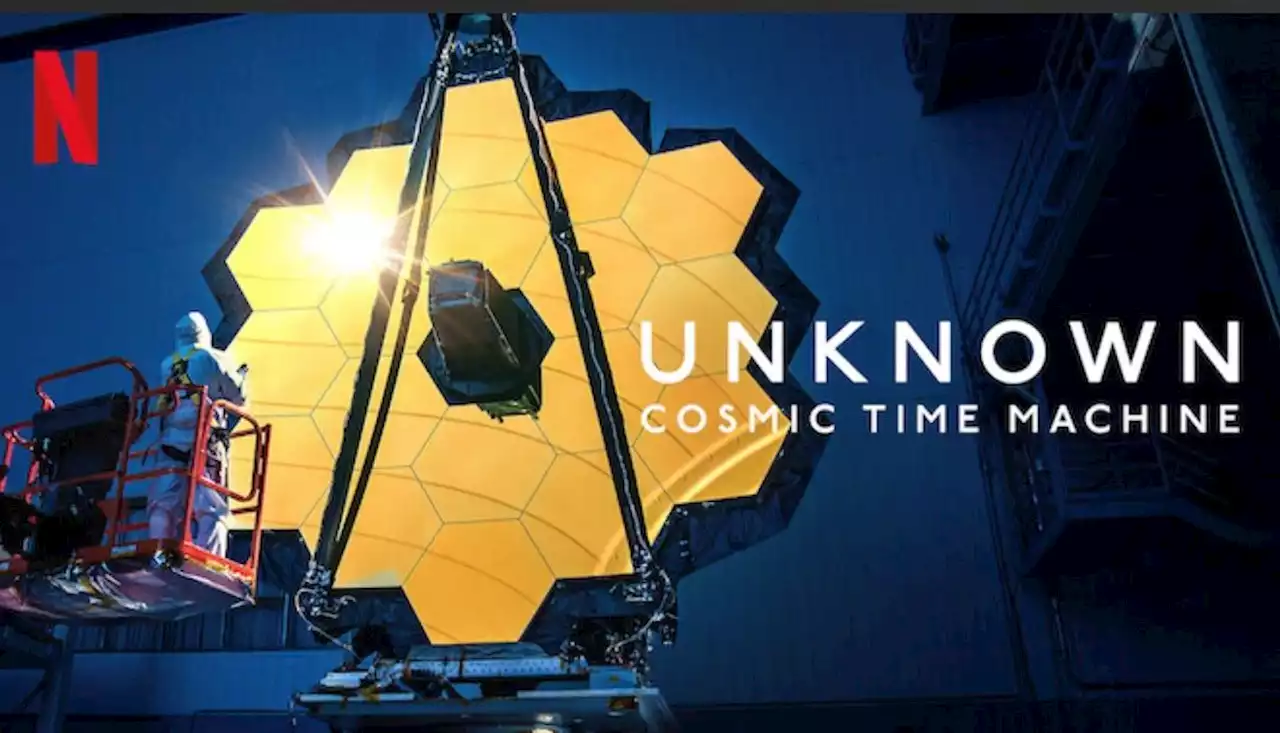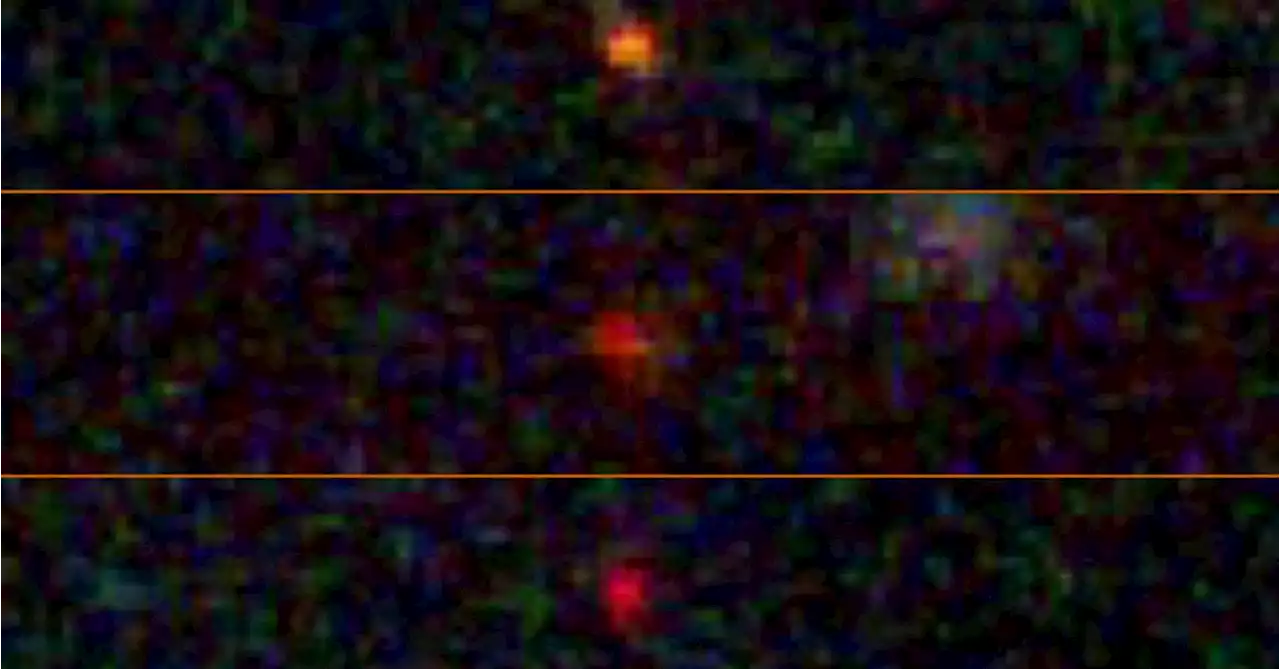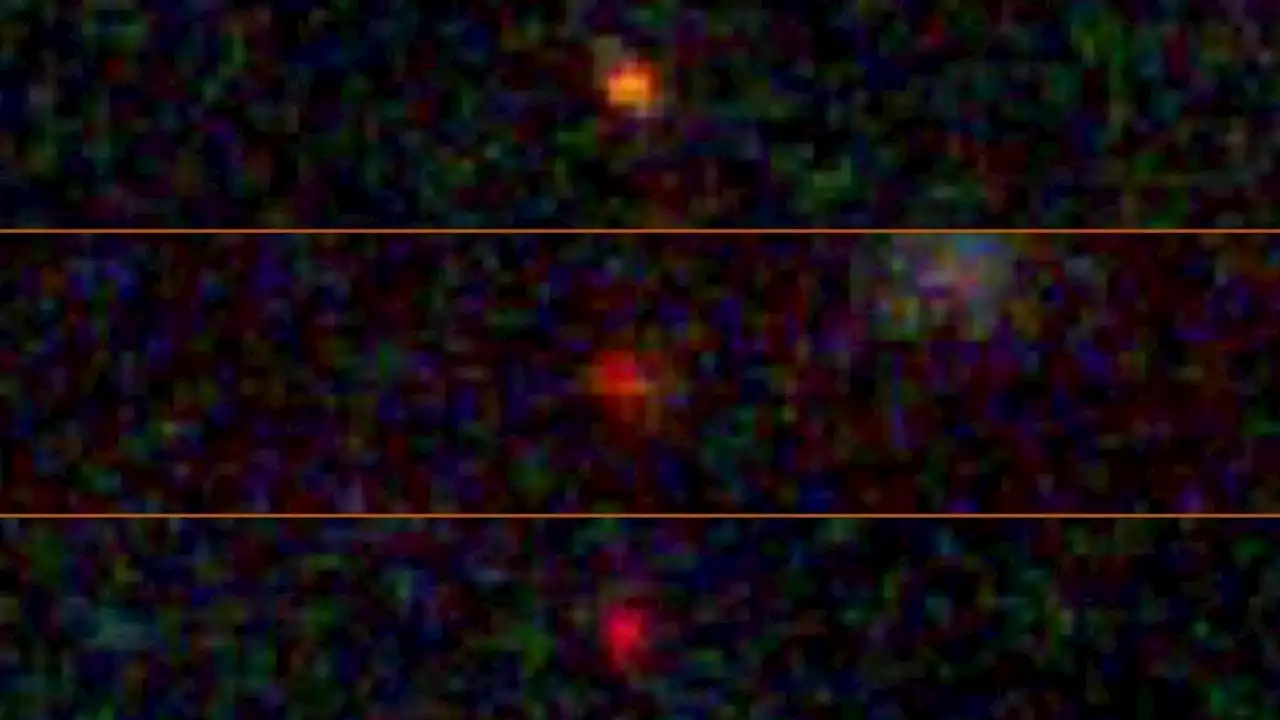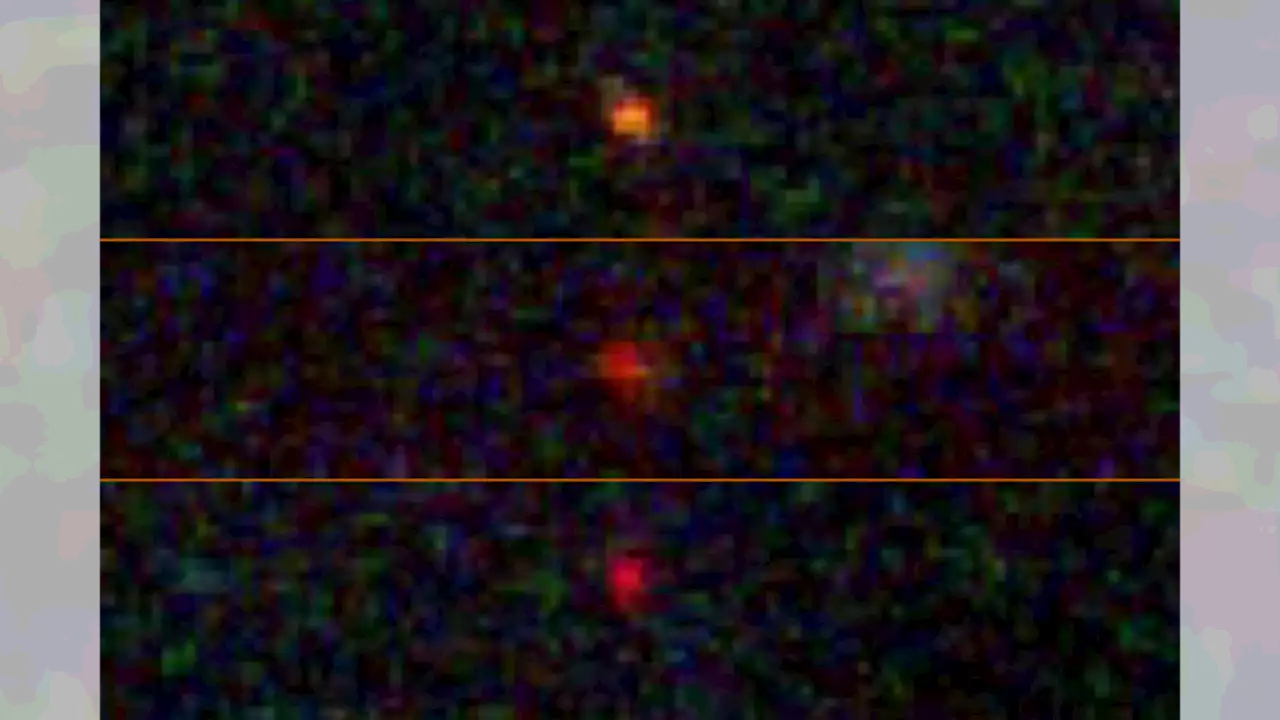Three early galaxies discovered by the James Webb Space Telescope could actually be titanic stars powered by a dark matter heart.
The James Webb Space Telescope may have found evidence of a strange and elusive type of star that only existed in the very early universe, when invisible dark matter was one of the only available fuel sources.
Dark matter, which is all but invisible because it doesn't interact with light, makes up an estimated 85% of the matter in the universe. Theory suggests that when two dark matter particles collide, they may"annihilate" each other, turning their combined mass into a shower of energetic gamma-ray radiation.
"Dark matter annihilation doesn't care about the temperature," Freese said."So you have dark matter annihilation throughout the entire [width] of the dark star. And the surface temperature is relatively cool. Because of that, there's no ionizing photons or other stuff coming off preventing the accretion of more matter."
Dark star, or ancient galaxy?Given their huge size, dark stars would appear as more spread-out objects rather than as point-like objects, like modern-day stars. This is how three ancient objects detected by the JWST — namedJADES-GS-z13–0, JADES-GS-z12–0, and JADES-GS-z11–0 — could have been misidentified as galaxies, according to the new research. These candidate dark stars date to between 320 million and to 420 million years after the Big Bang.
"As dark stars get displaced from the dark-matter-rich center, the dark stars start collapsing," Freese explained."This will trigger fusion in the smaller ones, creating ordinary fusion-powered stars [which are all created from collapsing clouds of gas]. The bigger ones will collapse immediately into black holes."
United States Latest News, United States Headlines
Similar News:You can also read news stories similar to this one that we have collected from other news sources.
 James Webb Space Telescope stars in new Netflix documentary 'Unknown: Cosmic Time Machine' (exclusive trailer)Netflix's 4-part science series finale turns its gaze towards the space telescope's galactic lightshow.
James Webb Space Telescope stars in new Netflix documentary 'Unknown: Cosmic Time Machine' (exclusive trailer)Netflix's 4-part science series finale turns its gaze towards the space telescope's galactic lightshow.
Read more »
 James Webb telescope might’ve discovered strange stars fueled by dark matterThe James Webb space telescope has discovered what scientists believe could be 'dark stars,' stars made of dark matter.
James Webb telescope might’ve discovered strange stars fueled by dark matterThe James Webb space telescope has discovered what scientists believe could be 'dark stars,' stars made of dark matter.
Read more »
 James Worthy Says LeBron James Could Get Statues In L.A., ClevelandJames Worthy tells TMZ Sports he could definitely see LeBron James getting statues in Cleveland AND Los Angeles one day.
James Worthy Says LeBron James Could Get Statues In L.A., ClevelandJames Worthy tells TMZ Sports he could definitely see LeBron James getting statues in Cleveland AND Los Angeles one day.
Read more »
 JWST may have spotted enormous stars powered by dark matterThe early universe could be home to huge stars powered by dark matter annihilation instead of fusion – and the James Webb Space Telescope may have already found some
JWST may have spotted enormous stars powered by dark matterThe early universe could be home to huge stars powered by dark matter annihilation instead of fusion – and the James Webb Space Telescope may have already found some
Read more »
 Webb telescope captures tantalizing evidence for mysterious 'dark stars'Scientists for the past 15 years have been looking for evidence of a type of star only hypothesized but never observed - one powered not by the fusion of atoms like the sun and other ordinary stars but by mysterious stuff called dark matter.
Webb telescope captures tantalizing evidence for mysterious 'dark stars'Scientists for the past 15 years have been looking for evidence of a type of star only hypothesized but never observed - one powered not by the fusion of atoms like the sun and other ordinary stars but by mysterious stuff called dark matter.
Read more »
 Scientists propose Webb Telescope has detected stars powered by dark matterA team of researchers suggests the space observatory just spotted 'dark stars'—theoretical stellar objects powered by dark matter.
Scientists propose Webb Telescope has detected stars powered by dark matterA team of researchers suggests the space observatory just spotted 'dark stars'—theoretical stellar objects powered by dark matter.
Read more »
